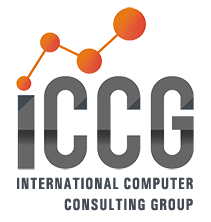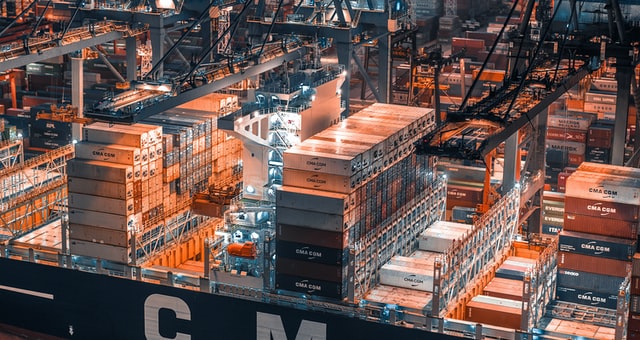The hospitality and gaming industries require specific functionality when it comes to sales and catering, and event management. The same goes for family entertainment centers like bowling centers, laser-tag spaces, and others.
What are those factors? What should organizations in these sectors look for in software solutions to manage these important aspects of their business. The cloud has emerged as a proven alternative to the legacy systems used by the hotel industry. One by one and group by group, independent hotels and chains alike, are seeking out a cloud-based platform to provide integrated solutions for their hospitality management needs.
Beyond cloud technology, let’s look at some other event sales and catering software characteristics that contribute to the success of hotel and casinos as legacy systems are beginning to be phased out.
Read More
Topics: ERP, Manufacturing, Supply Chain, Supply Chain Network, Infor M3 ERP, Enterprise Software, Retail Supply Chain, Supply Chain Operations, WMS, Supply Chain Management
The International Finance Corporation (IFC), the World Bank’s private sector arm, set out to provide relief to businesses in emerging regions as the pandemic roiled global markets. Stephanie von Friedeburg, MD and COO of the IFC, looks back on the year in a recent podcast where she reflects the following:
“There's been a substantive hit on supply chains, trade shocks. And so our trade finance business, which has always been a core of our business, has grown very substantially. And we've seen it in the poorest countries in particular, where we know that we need to continue to keep trade flowing. So we've seen an increase in trade finance in that relief piece. We've also seen many of our existing clients needing working capital and needing liquidity, and we believe it was important for us when we typically don't do a lot of liquidity or working capital, but important for us to step in and help our existing clients to withstand the crisis, keep them solvent so that when we come out of the crisis, we can rebuild faster and better.”
Read More
Topics: ERP, Manufacturing, Supply Chain, Supply Chain Network, Infor M3 ERP, Enterprise Software, Retail Supply Chain, Supply Chain Operations, WMS, Supply Chain Management
Overcoming (old and new) challenges
Warehouses and distribution centers can face challenges that impact everything from inventory management to operational strategy to employee management and more. Some of these challenges are the result of technologies that place new pressures on organizations that aren’t yet equipped to handle them. Some of these pressures are a direct result of how authorities, people, and businesses were forced to adjust to 2020’s global pandemic. Yet, with every challenge also comes opportunity. Below are some of the major challenges that are facing organizations today—and how they can be turned into opportunities.
Pick optimization
Many organizations lack the level of item master data needed for optimal cartonization and ideal facility layout. Without the proper item and location slotting (based on concepts such as seasonality, promotional activities, and sales projections), poor inventory placement across the warehouse often results in increased costs and reduced productivity. Much of that lost time and effort, however, can be reclaimed when organizations implement smarter management of where inventory is kept in a warehouse or distribution center by improving their slotting processes. In addition, enhanced slotting can even enable the strategic selection of optimized picking processes, such as pick to pass, batch picking, pick to light, sorting, voice picking, and more to increase volume and throughput.
Read More
Topics: ERP, Supply Chain, Warehouse Management Systems, Product Lifecycle Management, Infor M3 ERP, Enterprise Software, WMS, Supply Chain Management
Improve business productivity and agility
Modern enterprise resource planning (ERP) systems are helping businesses around the globe—including your competitors—revolutionize their operations. Distributors of all sizes are adopting technology that is designed to better manage business processes on an integrated and real-time basis. Technologically advanced ERP systems are an investment in your company’s operations, efficiency, intelligence, and productivity. Every feature of a modern ERP system ultimately ties back to these improvements, which enable your organization to become more productive, more competitive, and better positioned to meet your customers’ needs.
As these business systems evolved, they met the needs of their times, but their functionality was directly limited by the available technology. Today’s ERP systems might be better called digital operations platforms (DOP) to reflect their agile, artificial intelligence (AI)-based, and experience-driven nature, as well as the critical role they play in cloud-based, digital businesses.
Technology advances have transformed what an ERP (aka DOP) can do for your organization. Modern ERP systems provide a live view into what is happening and how it impacts your business today, as well as in the months and years to come. This helps you to focus on the future instead of the past.
Read More
Topics: ERP, Distribution, Supply Chain, Fashion & Apparel, Supply Chain Visibility, Supply Chain Network, digital disruption, Enterprise Software, Retail Supply Chain, Supply Chain Operations, Supply Chain Management, Infor CloudSuite M3, Infor CloudSuite ERP
As industry attitudes and consumer behaviors change, so does the challenge of sustaining a business in the fashion industry. The global health crisis has accelerated the need for retailers and fashion brand owners to reconsider the concepts of brick-and-mortar shops to meet the demands of digitally native consumers—while still maintaining omni-channel supply and ensuring sustainable production to allow for recycling. The landscape is evolving more quickly than many can adapt.
Despite these difficult new industry dynamics, fashion companies big and small still can turn these challenges into channels of transformation. Those who can observe and react to shifting buyer behaviors, regulatory changes, and the growing number of channels to market will not only gain a competitive edge, but also help assure the future success of their business.
Read More
Topics: Fashion & Retail, Distribution, Supply Chain, Fashion & Apparel, Cloudsuite Fashion & Apparel, Infor CloudSuite PLM for Fashion, Enterprise Software, Supply Chain Management
As the world emerges from a Covid-19-inspired hibernation, organizations are evaluating how to ensure the return to work is handled safely and efficiently. For many organizations, this return will be more symbolic than physical as the benefits of allowing employees to work remotely have become too obvious to ignore. For example, remember then Twitter CEO Jack Dorsey's communication to employees, suggesting they could continue to work remotely forever?
"If our employees are in a role and situation that enables them to work from home and they want to continue to do so forever, we will make that happen. If not, our offices will be their warm and welcoming selves, with some additional precautions, when we feel it’s safe to return."
This trend is unquestionably gaining momentum as other companies such as Google, Facebook, Microsoft and many others have formally communicated their intent to extend their remote work policies (some through the end of the calendar year).
Read More
Topics: ERP, Fashion & Retail, Supply Chain, Fashion PLM, Cloudsuite Fashion & Apparel, Infor M3 ERP, Enterprise Software, WMS, Supply Chain Management
Design your value chain for omni-channel
Today, customers expect to shop, compare, purchase, and consume on their own terms—on their own schedule, through a variety of channels, and on a variety of devices. For fashion companies, that means operating in a customer-driven economy. Not only should your marketing campaigns drive customers to the omni-channel outlets that you monitor, but your value chain should be ready to support these efforts. The omni-channel experience must be seamless and consistent, inspiring your customers to make purchases whether they’re in a physical store or online.
For your omni-channel management efforts and value chain to be in sync, you must move toward new business models that are far more collaborative, consumer driven, responsive, and quick. But how do you design a value chain so you can get closer to your customers and quickly deliver on their needs? And how do you get your value chain partners aligned to get the right products to where consumers want them—as quickly and efficiently as possible? This eBook will answer these questions and more.
Read More
Topics: ERP, Fashion & Retail, Supply Chain, Fashion PLM, Cloudsuite Fashion & Apparel, Infor M3 ERP, Enterprise Software, WMS, Supply Chain Management
Food and beverage companies face another pivotal year as the effects of the Covid-19 pandemic is forcing businesses to reevaluate their supply chain and operations strategy. To combat the challenges of supply chain disruption, shifting consumer demand, and market uncertainty, many organizations have turned to technology to promote resiliency and galvanize their business processes for the year ahead.
Below are five technology trends that experts anticipate will gain popularity in the years ahead as manufacturers prioritize agility and resilience over reactivity.
Read More
Topics: ERP, Food & Beverage, Supply Chain, Food Technology, CloudSuite Food & Beverage, Infor M3 ERP, Enterprise Software, WMS, Supply Chain Management
The existence of Conflicting objectives means we should look at aligning the processes and systems to enable us the make the appropriate decision and tradeoffs. But Siloed thinking and the Legacy systems deficit are making this more difficult to achieve.
There is no question that the solution is to first and foremost focus on people and process as we did in the second blog, Redefining the Processes, but technology can make a real difference to enable these processes and make the people able to focus on the important issues rather than the mundane task of data gathering and analysis.
The last 30 years have seen a huge expansion of global trade. Many of the goods we consume today are made in a different continents. The chase for the cheapest production location has resulted in complex, long lead time supply chains which have significantly increased the risk of disruptions, reduced supply chain efficiencies and increased our environment impact.
Read More
Topics: ERP, Supply Chain, Supply Chain Visibility, Supply Chain Network, Fashion PLM, Infor M3 ERP, Enterprise Software, Supply Chain Operations, WMS, Supply Chain Management
Future proof your supply chain with resilient and sustainable elements
Strengthening the supply chains in preparation for inevitable future uncertainties, and the need to be more sustainable whiles continuing to be efficient requires the development of processes, systems, and structures that enable rapid adaptation and resilience in the face of disruptions.
In this blog we’re going to look at the steps organizations can take to future-proof their supply chains, and at how they can build in resilience and sustainability elements.
A recent study, considered exactly this point. The study identified several key characteristics in this regard.
Read More
Topics: ERP, Supply Chain, Supply Chain Visibility, Supply Chain Network, Fashion PLM, Infor M3 ERP, Enterprise Software, Supply Chain Operations, WMS, Supply Chain Management











